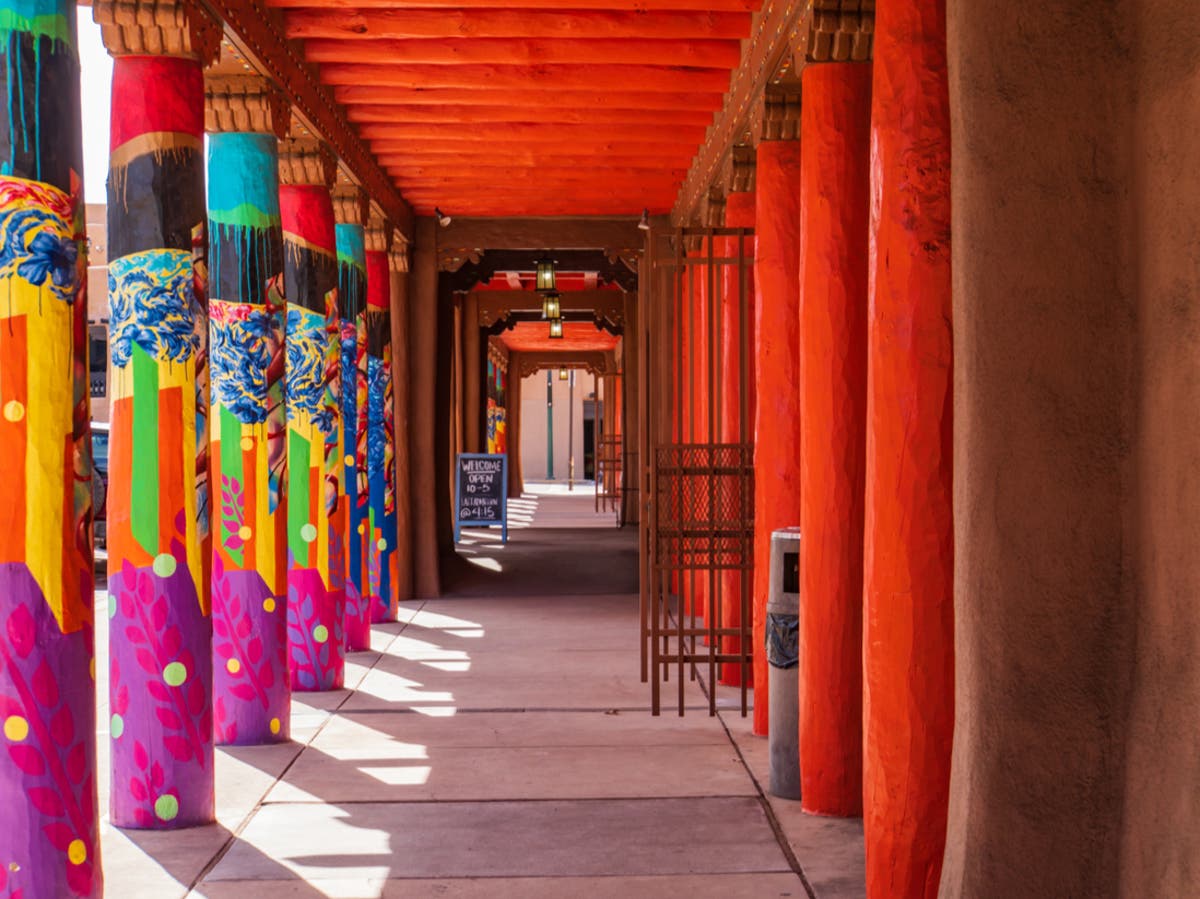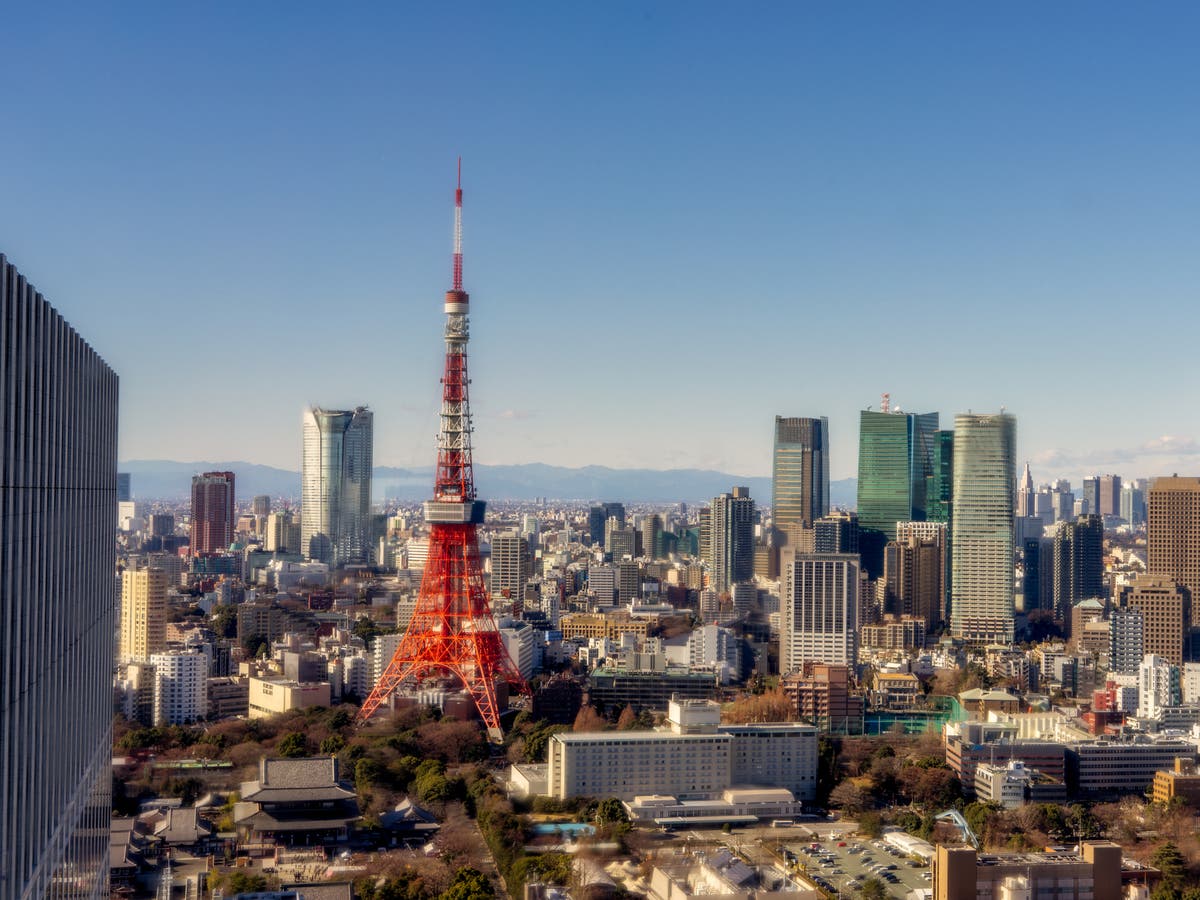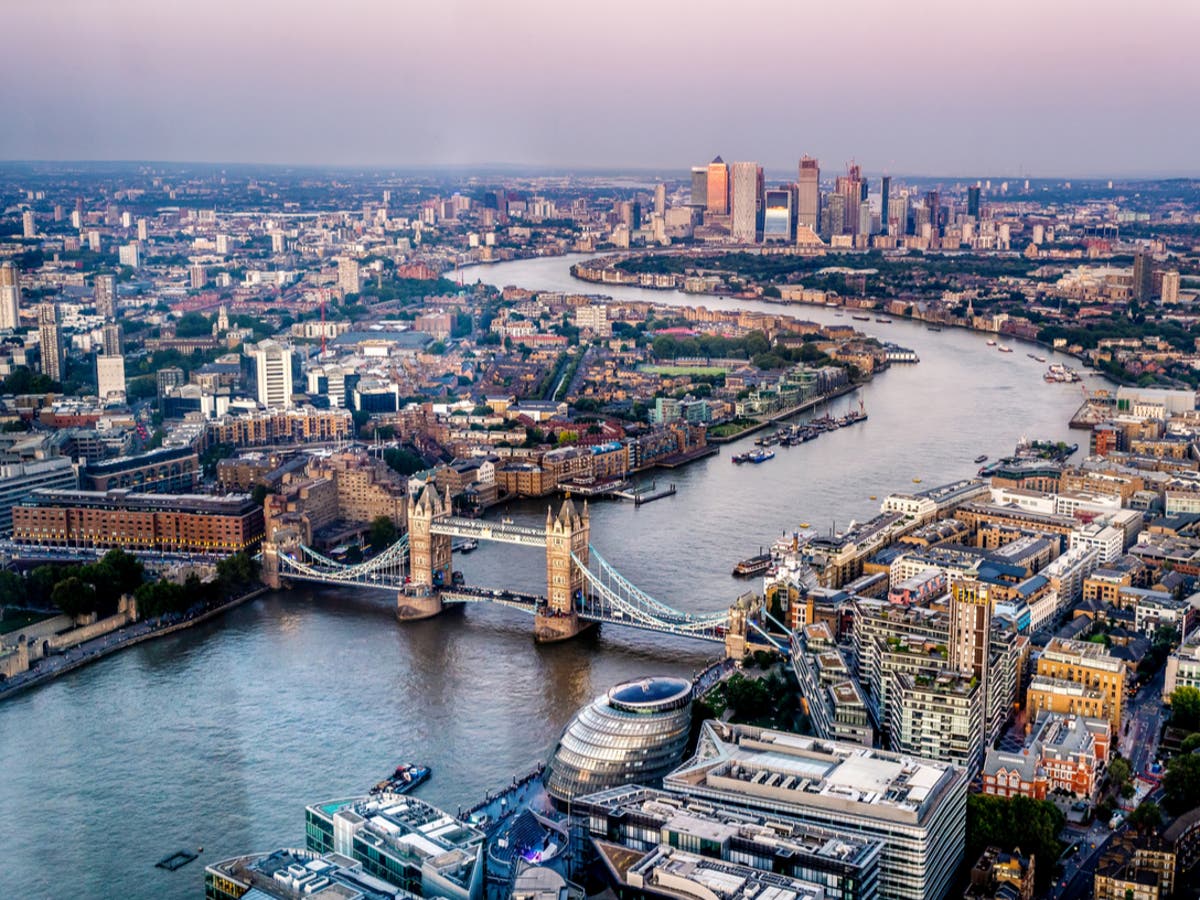How Santa Fe’s multicultural, multi-media arts landscape is getting even more diverse
Honest scrutiny of the past and a widening view of what culture here means are making New Mexico’s capital more compelling than ever, writes Elizabeth Miller

On a sunny, Saturday afternoon at the start of spring, music spilled into Santa Fe’s Railyard district from the Cowgirl, a BBQ restaurant with a band playing on its peach-toned adobe wall-ringed patio.
One of the Sky Rail trains, which offers riders an immersive experience of improv theatre, on-the-go cocktail parties or an evening under the crystalline stars in Galisteo Basin just south of the city, already had its engine, painted with the grinning jaws and folded ears of a wolf, pointed south down the spur rail line that gives the Railyard District its name. Vendors from the Santa Fe farmer’s market were folding up the white tent tops and tables from the morning, where the first spring greens had been laid out among bundles of dried chiles from last autumn.
Tables at two almost adjacent breweries in the Railyard, Second Street and Bosque Brewing, were squeezed with patrons sipping India pale ales and snacking on nachos, while diners at the high-top seats at Opuntia Tea House looked out onto the still snow-capped mountains east of the city. Wrought-iron sculptures fronted art gallery doors, and a latticework metal prow marked SITE Santa Fe, a contemporary art museum hosting light and space movement artist Helen Pashgian’s Presences, an installation formed of ethereal spheres and luminous pillars of light.
I stepped into Blue Rain Gallery, where Rimi Yang’s jewel-toned portraits of quasi-fairy tale characters met with Preston Singletary’s cast lead crystal sculptures of figures from his Tlingit culture, an Alaska Native tribe: a translucent blue Fog Woman and Raven and the Box of Daylight. Shelves of kachinas, small statues carved from cottonwood tree roots, and traditional-style pottery made by contemporary Native artists faced Doug West’s oil paintings of landscapes not far from here – Ghost Ranch and the Sandia mountains – and Erin Currier’s mixed media portraits of activists and athletes. I reflected that these moments where fresh takes, modern figures and traditional arts rub up against one another feel very much part of Santa Fe’s DNA.
The Unesco “creative city” has been recognised for its longstanding role as a destination for artistic trade, a hub for Native American art, dance and jewellery, and a place where crafts brought to the Americas centuries ago by Spanish colonists are still practised. It ranks among the leading markets for visual arts in the United States, with more than 250 galleries, and one of the highest per capita rates for museums and arts-orientated jobs in the country, including some of the highest percentages of professional artists and writers.
Santa Fe Railyard is a hotspot for drinking and dining
(Getty Images)
But cultural overlays aren’t always easy to pull off peacefully. On summer evenings, blues, country and Americana music alternates with traditional mariachi and flamenco at the bandstand in the city’s plaza, while people dance on the paved square or sit on blankets tossed over the grass, near where an emptied pedestal marks an obelisk toppled by demonstrators on Indigenous Peoples’ Day (formerly Columbus Day) in 2020. The pillar recognised the “heroes … fallen in the various battles with savage Indians in the territory of New Mexico”, and had already once been modified by an indigenous man who struck the word “savages” from its inscription. After nearby tribal communities protested against the obelisk’s ongoing celebration of their subjugation and genocide – and criticised the city for treating tribal communities as tourist commodities – the mayor agreed to address it. But for months, nothing moved. So protesters strung a chain around the stacked marble blocks, and pulled them over.
On summer evenings, blues, country, and Americana music alternates with traditional mariachi and flamenco at the bandstand in the city’s plaza
Some traditions, like Fiestas, an annual celebration of the Spanish conquest of New Mexico, have been challenged for glossing over history’s darker turns. In 1680, a number of pueblos, tribal communities in northern New Mexico, coordinated a revolt that repelled Spanish conquistadors, colonists and the territorial governor as far as what’s now Juarez, Mexico, 500km to the south. Fiestas’ events included a re-enaction of Don Diego de Vargas leading the Spanish to reclaim the territory in 1692, with men in shining metal helmets and sweeping capes riding horses into the plaza to be greeted by a Native dancer in a show of peaceful reoccupation. But this “peaceful” rendition, local tribal members and protesters argued, focused on a moment of calm that preceded brutalities, executions and enslavements of pueblo Indians and celebrated what amounted to efforts to obliterate their cultures. Fiestas dropped the entrada pageant from its line-up in 2018.
Santa Fe Plaza plays host to a mix of artforms and cultures throughout the summer
(Getty Images)
All of which is to say, Santa Fe has a layered and complex history, both in figurative and literal ways. A city staffer once told me it was near-impossible to sink a shovel downtown and not hit remnants of the Tewa residents who knew the place as Oga Po’geh, or White Shell Water Place. Progress can’t move forward without a careful and intentional acknowledgement of the past.
Histories and other global influences take turns in the spotlight over summer weekends, with three major annual art markets: the international folk art market, the traditional Spanish colonial market, and the Indian market. That many of the city’s museums nestle close to one another on Museum Hill also makes it easy to sample the course, viewing traditional and contemporary indigenous arts at the Wheelwright, then Spanish colonial art, and pausing for a moment with the landscape at the Santa Fe Botanical Garden.
The Spanish Colonial Arts Society museum in Santa Fe
(Getty Images)
Summer also sees the world-class Santa Fe Opera filling its open-air amphitheatre with, this year, Carmen’s plaintive arias and Tristan and Isolde’s star-crossed lovers’ story. Probably the buzziest iteration of Santa Fe as a centre for artistic innovation is found at Meow Wolf’s House of Eternal Return, the interactive arts exhibit that spins a mystery about a vanished family at an old Victorian house (and now also includes one of the city’s prime mid-size music venues). So the city isn’t short on artistic offerings – but, to Dorothy Massey, it’s always been missing something. Finally, this year, that shortage is filled.
Massey tallies the robust array of independent bookstores around the city at 18. She’s owned one of them, Collected Works Bookstore, for the past 26 years. The shop occupies a sunny corner a few minutes’ walk from the plaza, with shelves stocked with southwestern writers and the latest fiction and nonfiction debuts.
Santa Fe has been the leading draw in the west for so many wonderful artforms – literary, photography, painting, dance, sculpture
Dorothy Massey
“For two-and-a-half decades, I’ve often heard, ‘I wish we had a literary festival,’” Massey said. This year, that wish is fulfilled in the inaugural Santa Fe Literary Festival.
“Santa Fe has been the leading draw in the west for so many wonderful artforms – literary, photography, painting, dance, sculpture, with the rich background of cross-cultures that we have here, and the literary arts have not really been brought to the forefront and given their appropriate, stellar place,” Massey said. “This festival recognises literature as an equally important artform.”
That it’s building on ground laid by the likes of Collected Works, which regularly hosts readings, and the Lannan Foundation, which tours authors through town to speak, means that some of the big names booked for the festival, such as Pulitzer prize-winning fiction writer Colson Whitehead and repeat US poet laureate Joy Harjo, aren’t debuting in Santa Fe, but making a return visit. Other high-profile authors such as Margaret Atwood, John Grisham, Asma Khan and Jonn Krakauer, add to the significant depth and breadth of the line-up. Collected Works will be there, too, with a pop-up bookstore built into the downtown convention centre hosting the festival’s main events.
Downtown Santa Fe
(Getty Images/iStockphoto)
When I ask Cecile Lipworth, event producer for Collected Works, for her guess as to how the festival was able to draw such a star-studded line-up, with the likes of Sandra Cisneros and N Scott Momaday, she credits the city itself: “Authors understand the literary figures in Santa Fe, the people we’ve had here for decades, who have lived here as authors – I think it’s very highly regarded, and I don’t think that was a hard pitch, to come to Santa Fe.”
Travel essentials
Getting there
Trying to fly less?
Adventurous types could take a cargo ship from Belgium to Houston, from where they can take a train or bus to Santa Fe in less than a day.
Fine with flying?
Connect in Dallas or Chicago for flights to Albuquerque, an hour’s drive from Santa Fe.
Staying there
El Rey Court harks back to the heyday of legendary US road-trip route Highway 66, but was overhauled in 2018 with a modern, chic sensibility that blends southwestern accents – pillows, throws, the occasional set of antlers and potted cactus – with clean lines and ample light. Doubles from £97. elreycourt.com
More information
Santa Fe Literature Festival runs for four days from 20-23 May 2022.
The Independent, as the event’s international media partner, will be providing coverage across each day of the festival as well as during the lead up with exclusive interviews with some of the headline authors. For more on the festival visit our Santa Fe Literary Festival section by clicking here or visit the festival’s website here. To find out more about buying tickets click here.

 JimMin
JimMin 































